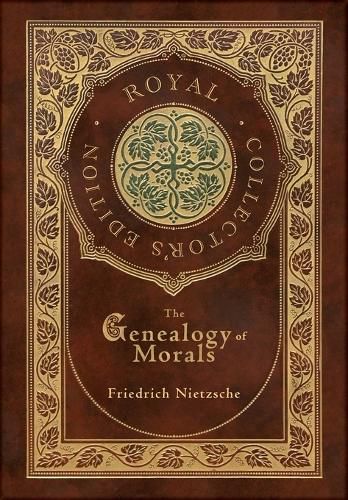Readings Newsletter
Become a Readings Member to make your shopping experience even easier.
Sign in or sign up for free!
You’re not far away from qualifying for FREE standard shipping within Australia
You’ve qualified for FREE standard shipping within Australia
The cart is loading…






This title is printed to order. This book may have been self-published. If so, we cannot guarantee the quality of the content. In the main most books will have gone through the editing process however some may not. We therefore suggest that you be aware of this before ordering this book. If in doubt check either the author or publisher’s details as we are unable to accept any returns unless they are faulty. Please contact us if you have any questions.
The three interrelated treatises trace episodes in the evolution of moral concepts with a view to confronting moral prejudices, specifically those of Christianity and Judaism. In the first treatise, Nietzsche demonstrates that the two pairs of opposites "good/evil" and "good/bad" have very different origins, and that the word "good" itself came to represent two opposed meanings. The second treatise examines what we call "the conscience" is the end product of a long and painful socio-historical process that began with the need to create a memory in the human animal. In the third treatise, Nietzsche asks the question "What do ascetic ideals mean?"
Some Nietzsche scholars consider The Genealogy of Morals to be a work of sustained brilliance and power as well as his masterpiece. Since its publication, it has influenced many authors and philosophers. Some of the contents and many symbols and metaphors portrayed in The Genealogy of Morals, together with its tripartite structure, seem to be based on and influenced by Heinrich Heine's On the History of Religion and Philosophy in Germany.
This case laminate collector's edition includes a Victorian-inspired dust jacket.
$9.00 standard shipping within Australia
FREE standard shipping within Australia for orders over $100.00
Express & International shipping calculated at checkout
This title is printed to order. This book may have been self-published. If so, we cannot guarantee the quality of the content. In the main most books will have gone through the editing process however some may not. We therefore suggest that you be aware of this before ordering this book. If in doubt check either the author or publisher’s details as we are unable to accept any returns unless they are faulty. Please contact us if you have any questions.
The three interrelated treatises trace episodes in the evolution of moral concepts with a view to confronting moral prejudices, specifically those of Christianity and Judaism. In the first treatise, Nietzsche demonstrates that the two pairs of opposites "good/evil" and "good/bad" have very different origins, and that the word "good" itself came to represent two opposed meanings. The second treatise examines what we call "the conscience" is the end product of a long and painful socio-historical process that began with the need to create a memory in the human animal. In the third treatise, Nietzsche asks the question "What do ascetic ideals mean?"
Some Nietzsche scholars consider The Genealogy of Morals to be a work of sustained brilliance and power as well as his masterpiece. Since its publication, it has influenced many authors and philosophers. Some of the contents and many symbols and metaphors portrayed in The Genealogy of Morals, together with its tripartite structure, seem to be based on and influenced by Heinrich Heine's On the History of Religion and Philosophy in Germany.
This case laminate collector's edition includes a Victorian-inspired dust jacket.